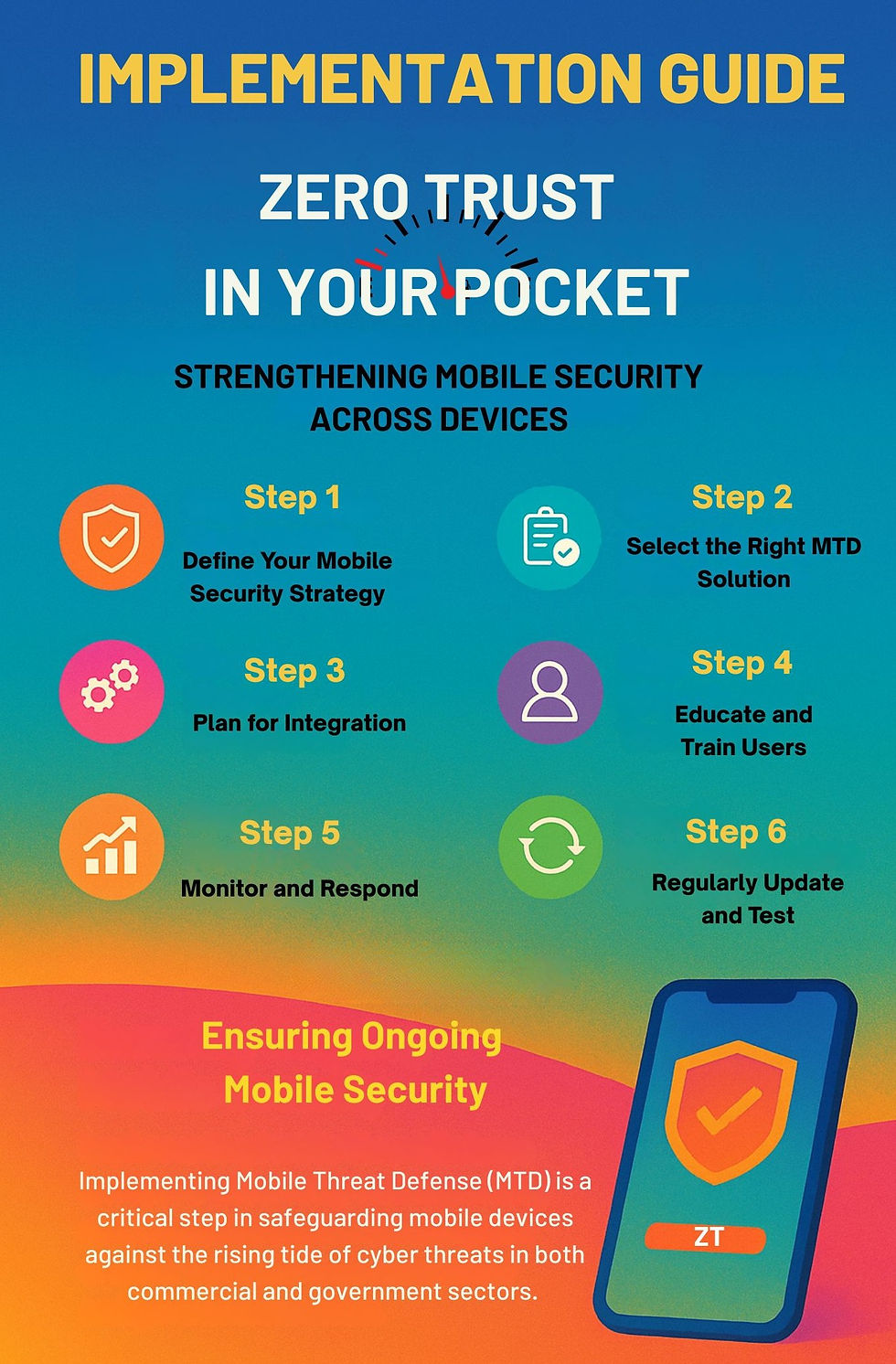Digital Twin- Zero Trust Architecture: A New Era of Cyber Defense
- Sai Sravan Cherukuri
- Nov 14
- 3 min read

Cyber adversaries aren’t standing still, and neither can organizations. In today’s environment, where networks face relentless, increasingly sophisticated attacks, traditional perimeter-based security models are no longer sufficient. The solution lies in zero trust, a security approach that assumes every user, device, and connection is untrusted until verified. Think of it as “trust, but always verify.” By assuming breach, zero trust allows organizations to operate with speed, resilience, and the ability to contain damage before it spreads.
Zero Trust in Everyday Terms
Imagine a secure office building. In the old model, once someone swipes their access card at the front door, they can roam freely inside. Zero trust flips this model: every room, elevator, and cabinet requires verification, no matter who you are or where you came from. Even trusted employees must re-authenticate to access sensitive areas.
In the digital world, zero trust applies the same principle to users, devices, and applications, making it far harder for attackers to move laterally and compromise critical systems.
Digital Twins: The Cybersecurity Proving Ground
Operationalizing zero trust requires more than theory; it demands practical tools. Enter digital twins, software-based replicas of real-world networks. Organizations can safely simulate attacks, test policies, and validate updates before deploying them to live systems.
Think of a digital twin like a flight simulator for cybersecurity. Pilots don’t practice emergency maneuvers in the air; they use simulators. Similarly, organizations can experiment with digital twins to identify vulnerabilities, optimize defenses, and rehearse incident responses without risking mission-critical systems.
This approach isn’t just safer, it’s faster and more cost-effective. Instead of maintaining expensive physical labs, organizations can rely on digital twins to test changes in real-time, ensuring their security posture evolves alongside emerging threats.
Strategies for Anticipating Compromise While Ensuring Operational Resilience
Even with digital twins and emerging technologies, organizations face challenges such as budget constraints, legacy systems, and operational inertia. Implementing zero trust requires a holistic approach across people, processes, and tools.
People: Building a Culture of Trust and Awareness
Embrace change management: Zero trust is a cultural shift. Teams must understand why zero trust matters and how it improves both security and operational efficiency.
Quantify and communicate value: Preventing breaches is an invisible benefit. Define success in terms of reduced risk, faster compliance, and operational consistency. Establish milestones to measure improvements and communicate wins clearly.
Process: Planning for Containment and Response
Adopt damage-limitation thinking: Instead of asking, “How do we prevent every breach?” organizations should focus on minimizing impact.
Develop incident response plans with clear roles and communication protocols.
Conduct tabletop exercises and simulations to test the plan’s effectiveness.
Automate security workflows to accelerate response times and reduce human error.
Prioritize planning: Best practices show that projects with 90% planning and 10% execution are far more likely to succeed. Engage stakeholders early, secure organizational buy-in, and define objectives before rolling out zero-trust initiatives.
Tools: Leveraging Technology for Resilience
Deploy digital twins: Use digital replicas to test controls, simulate attacks, and validate policies safely. Pair them with agile practices and model-based systems engineering to rehearse incidents and refine architectures.
Consolidate intelligently: Many organizations struggle with tool sprawl. Mapping your environment with digital twins helps identify duplicates and streamline tools without compromising security. Focus on mission-centric capabilities for efficiency and clarity.

Accelerating Zero Trust at Scale
Zero trust is more than a framework; it’s a mindset. Organizations must act boldly, combining advanced technologies, meticulous planning, and cross-team collaboration to stay ahead of adversaries.
By harnessing AI, digital twins, and operational best practices, organizations can anticipate compromise, ensure continuity, and empower every stakeholder to play a proactive role in defense. The path forward is clear: invest today in strategies that secure tomorrow. Operational resilience isn’t reactive; it’s built before a crisis hits.
Zero trust is about creating an IT environment that is agile, adaptive, and resilient. With the right people, processes, and tools, organizations can turn cyber uncertainty into a strategic advantage.








